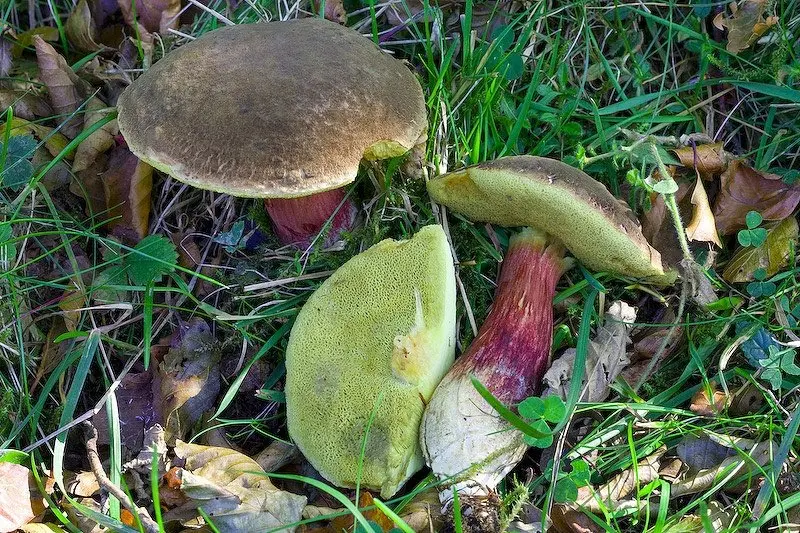Contents
Velvet flywheel (Xerocomellus pruinatus)
- Division: Basidiomycota (Basidiomycetes)
- Subdivision: Agaricomycotina (Agaricomycetes)
- Class: Agaricomycetes (Agaricomycetes)
- Subclass: Agaricomycetidae (Agaricomycetes)
- Order: Boletales (Boletales)
- Family: Boletaceae (Boletaceae)
- Genus: Xerocomellus (Xerocomellus or Mohovichok)
- Type: Xerocomellus pruinatus (Velvet flywheel)
- Mokhovik waxy;
- Flywheel frosty;
- Flywheel matte;
- Fragilipes boletus;
- Frosted mushroom;
- Xerocomus frostbite;
- Xerocomus fragilipes.

Velvet flywheel (Xerocomellus pruinatus) is an edible mushroom belonging to the Boletov family. In some classifications, it is referred to Boroviks.
External description of the fungus
The fruit body of the velvet flywheel (Xerocomellus pruinatus) is represented by a stem and a cap. The diameter of the cap is from 4 to 12 cm. Initially, it has a spherical shape, gradually becoming cushion-shaped and even flat. The top layer of the cap is represented by a velvety skin, but in mature mushrooms the cap becomes bare, sometimes wrinkled, but not cracking. Occasionally, cracks appear only in old, overripe fruiting bodies. There may be a dull coating on the skin of the cap. The color of the cap varies from brownish, red-brown, purplish-brown to deep brown. In mature velvet fly mushrooms, it is often faded, sometimes characterized by a pinkish tint.
A distinctive feature of any flywheels (including velvety) is the presence of a tubular layer. The tubes contain olive, yellow-green or bright yellow pores.
Mushroom pulp is characterized by a white or slightly yellowish color, if its structure is damaged, or if you press hard on the surface of the pulp, it will turn blue. The aroma and taste of the described type of mushrooms are at a high level.
The length of the mushroom leg is 4-12 cm, and in diameter this leg can reach 0.5-2 cm. It is smooth to the touch, and varies in color from yellow to reddish-yellow. Microscopic examination demonstrates that in the pulp of the mushroom leg there are amyloid hyphae of a thick-walled structure, which is one of the main differences between the described mushroom species. Fusiform fungal spores with an ornamented surface are particles of a yellowish spore powder. Their dimensions are 10-14 * 5-6 microns.
Habitat and fruiting period
The velvet flywheel grows on the territory of deciduous forests, mainly under oaks and beeches, and also in coniferous forests with spruces and pines, as well as in mixed woodlands. Active fruiting begins at the end of summer and continues during the first half of autumn. It grows mainly in groups.
Edibility
Velvet moss mushroom (Xerocomellus pruinatus) is edible, can be used in any form (fresh, fried, boiled, salted or dried).
Similar species, distinctive features from them
A fungus similar to the velvet flywheel is the variegated flywheel (Xerocomus chrysenteron). However, the dimensions of this similar variety are smaller, and the cap is cracking, yellow-brown in color. The often described type of flywheel is confused with the fissured flywheel, which bears fruit from mid-summer until late autumn. Between these two varieties of flywheels, there are many subspecies and intermediate forms, combined into one type, called the Cisalpine flywheel (lat. Xerocomus cisalpinus). This species differs from the velvet flywheel in the wider size of the spores (they are larger by about 5 microns). The cap of this species cracks with age, the leg has a short length, and when pressed or damaged on the surface, it becomes bluish. In addition, cisalpine flywheels have paler flesh. Through microscopic examinations, it was also possible to find out that its stem contains the so-called waxy hyphae, which are not found in the velvet flywheel (Xerocomellus pruinatus).
Interesting information about the flywheel velvet
The specific epithet “velvet”, which is assigned to the described species, was adopted in connection with the most frequent use of this particular term in the -language scientific literature. However, the most accurate designation for this type of fungus can be called a frosty flywheel.
The genus name for the velvet flywheel is Xerocomus. Translated from Greek, the word xersos means dry, and kome means hair or fluff. The specific epithet pruinatus comes from the Latin word pruina, translated as frost or wax coating.









